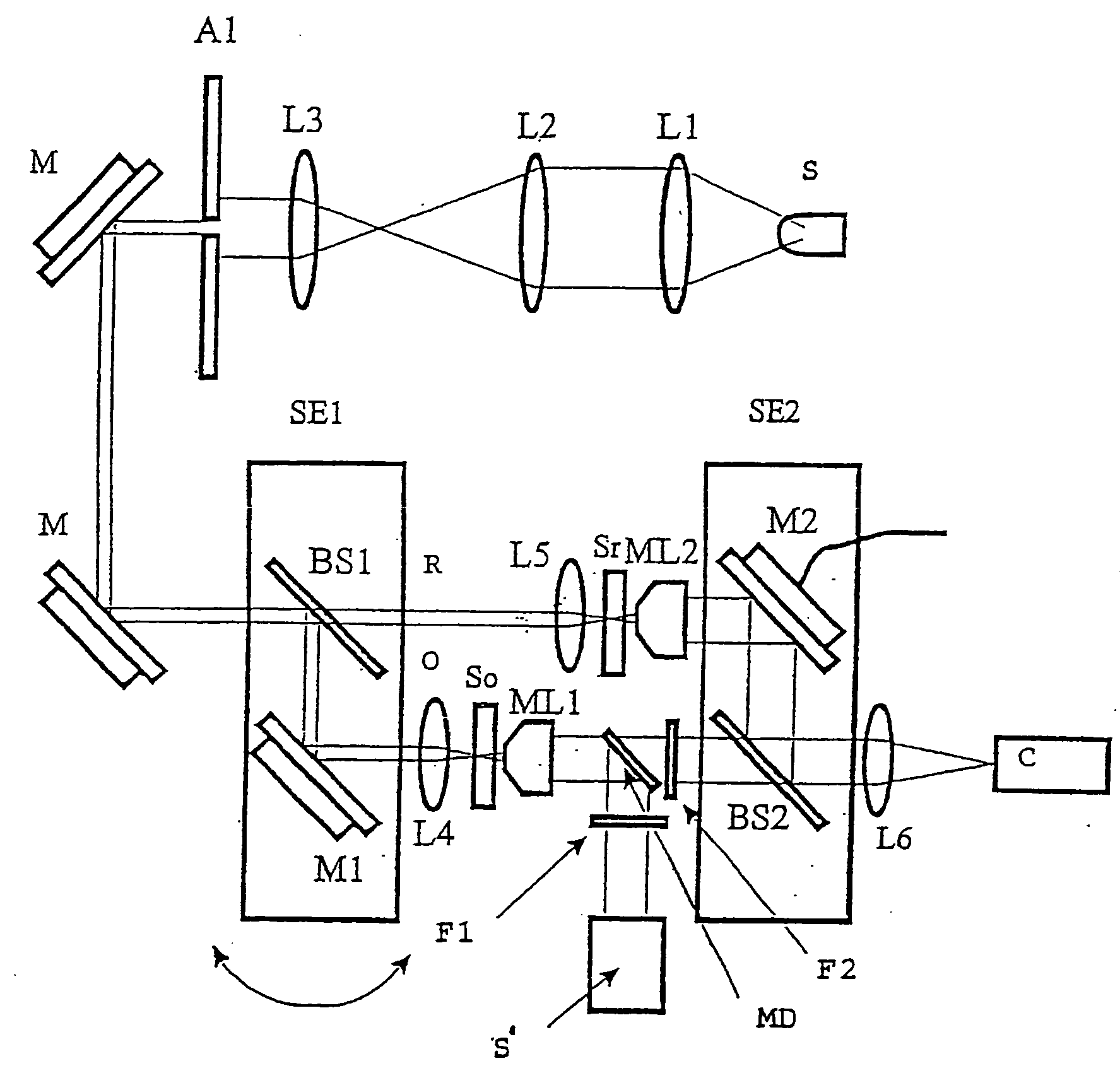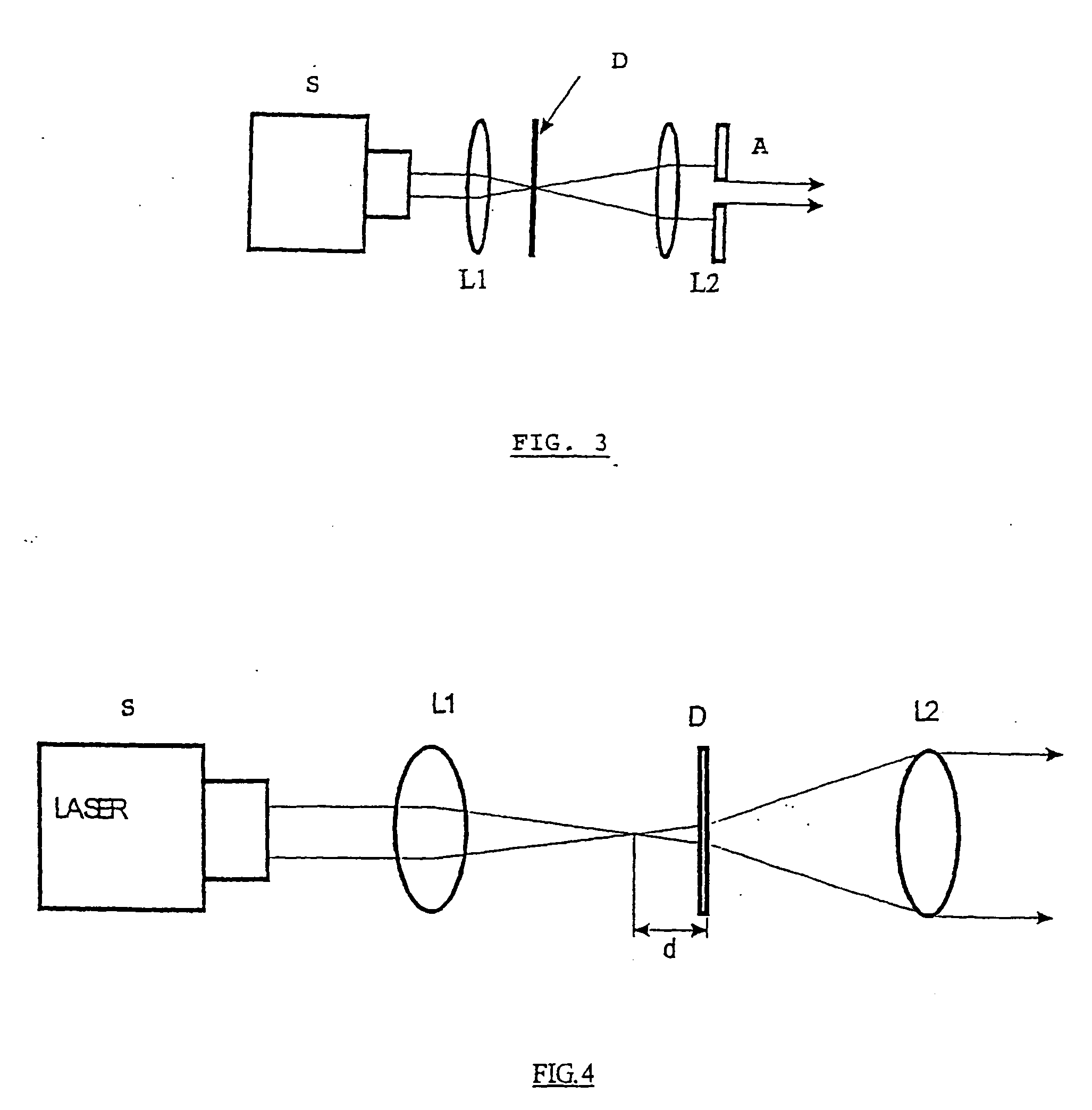Digital holographic microscope
a holographic microscope and microscope technology, applied in the field of digital holographic microscopes, can solve the problems of preventing good acquisition of images, difficult interpretation of images, and affecting the quality of images, and achieves the effects of reducing time delay, facilitating high-quality three-dimensional images, and reducing costs
- Summary
- Abstract
- Description
- Claims
- Application Information
AI Technical Summary
Benefits of technology
Problems solved by technology
Method used
Image
Examples
Embodiment Construction
Light Sources Used for the Digital Holography
[0095] Different types of sources can be used for illuminating the sample to be studied.
[0096] A first type of light source that can be used in the instrument corresponds to a partially spatially coherent source as shown in FIG. 1. An achromatic lens L1 collimates the light rays emitted by an extended spatially incoherent wavelength-filtered source S, for example an LED (light-emitting diode), to a first iris diaphragm A1 of adjustable aperture. The aperture A1 limits the angular spectrum of the source so as to increase the spatial coherence of the light. A second achromatic lens L2 creates a secondary source in its focal plane in which a second iris diaphragm A2 limits the size of the source. A third lens L3 forms a collimated beam. For digital holography, the focal lengths of L1, L2, L3 are, for example, 100 mm.
[0097] A second type of light source that can be used in the instrument corresponds to a partially coherent source as shown...
PUM
| Property | Measurement | Unit |
|---|---|---|
| focal lengths | aaaaa | aaaaa |
| digital holographic microscope | aaaaa | aaaaa |
| spectral width | aaaaa | aaaaa |
Abstract
Description
Claims
Application Information
 Login to View More
Login to View More - R&D
- Intellectual Property
- Life Sciences
- Materials
- Tech Scout
- Unparalleled Data Quality
- Higher Quality Content
- 60% Fewer Hallucinations
Browse by: Latest US Patents, China's latest patents, Technical Efficacy Thesaurus, Application Domain, Technology Topic, Popular Technical Reports.
© 2025 PatSnap. All rights reserved.Legal|Privacy policy|Modern Slavery Act Transparency Statement|Sitemap|About US| Contact US: help@patsnap.com



